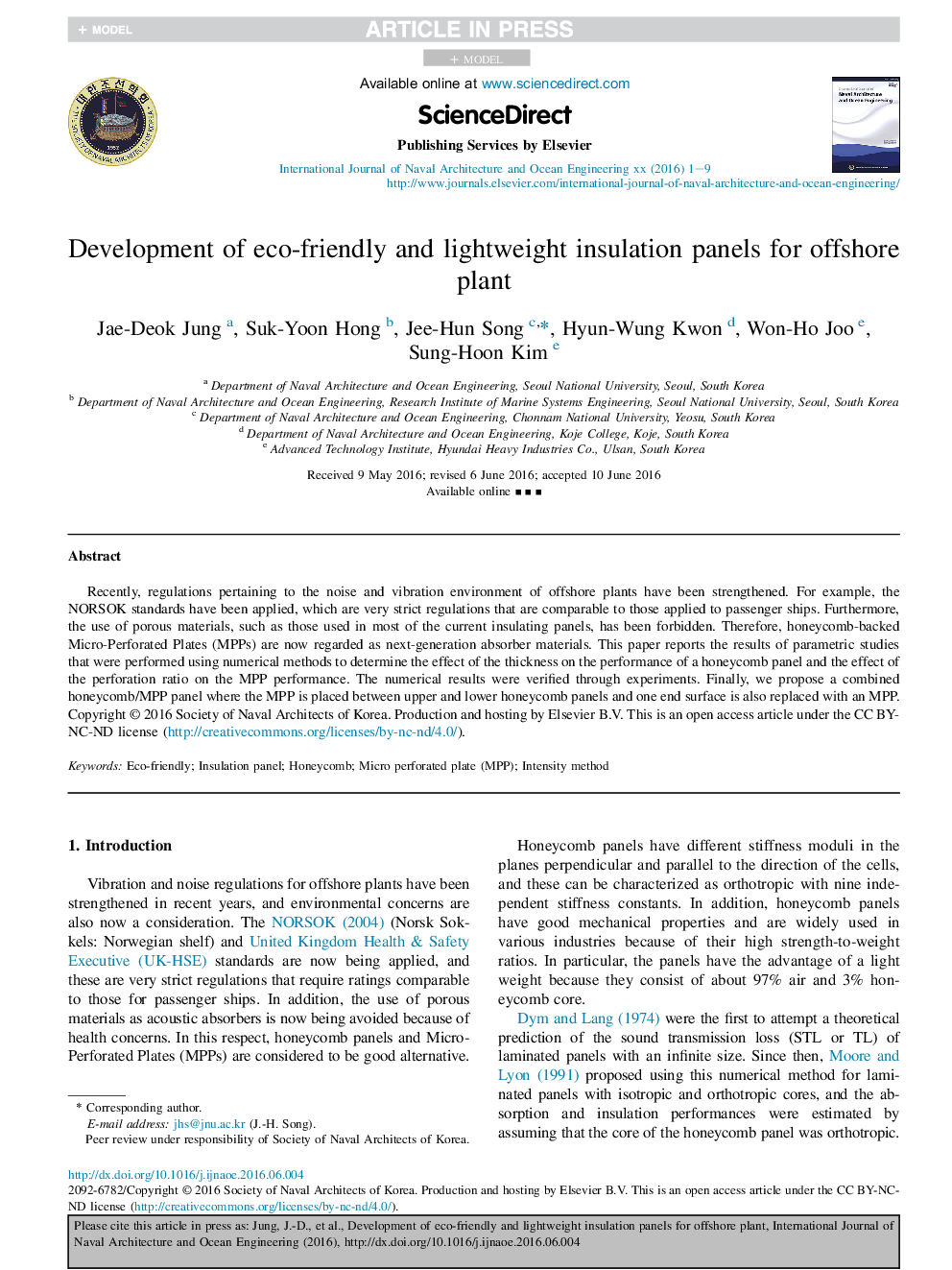| Article ID | Journal | Published Year | Pages | File Type |
|---|---|---|---|---|
| 8865076 | International Journal of Naval Architecture and Ocean Engineering | 2016 | 9 Pages |
Abstract
Recently, regulations pertaining to the noise and vibration environment of offshore plants have been strengthened. For example, the NORSOK standards have been applied, which are very strict regulations that are comparable to those applied to passenger ships. Furthermore, the use of porous materials, such as those used in most of the current insulating panels, has been forbidden. Therefore, honeycomb-backed Micro-Perforated Plates (MPPs) are now regarded as next-generation absorber materials. This paper reports the results of parametric studies that were performed using numerical methods to determine the effect of the thickness on the performance of a honeycomb panel and the effect of the perforation ratio on the MPP performance. The numerical results were verified through experiments. Finally, we propose a combined honeycomb/MPP panel where the MPP is placed between upper and lower honeycomb panels and one end surface is also replaced with an MPP.
Keywords
Related Topics
Physical Sciences and Engineering
Earth and Planetary Sciences
Oceanography
Authors
Jae-Deok Jung, Suk-Yoon Hong, Jee-Hun Song, Hyun-Wung Kwon, Won-Ho Joo, Sung-Hoon Kim,
